Creo que la mayoría de nosotros tenemos alguna comida en particular que nos hace evocar lindos momentos del pasado, como de nuestra niñez, por ejemplo. Siempre recuerdo que, cuando yo era niña, mi abuela solía inventar demasiado en la cocina y, muy a su manera, terminaba preparando platillos únicos y muy especiales que nunca llegué a probar en otro lugar o de la mano de algún otro cocinero extraordinario.
Las famosas tostadas de arepa de mi abuela era uno de mis desayunos favoritos cuando era niña. No sé realmente de dónde ella habrá sacado esa forma de preparar las arepas, pero lo que sí sé es que en ningún otro lugar he llegado a comerlas de esta manera e incluso, cuando le contaba a alguien sobre las tostadas de arepa tan deliciosas que mi abuela preparaba, las personas se me quedaban observando con cara de confusión y simplemente me preguntaban: ¿de qué me estás hablando? Yo les terminaba explicando en qué consistía eso, pero aún así era la primera vez que ellos escuchaban de algo similar. Así que, técnicamente, yo le atribuyo esta forma en particular de preparar las arepas "viejas" a mi abuela hasta que alguien pueda decirme que ya ha probado esto en otro lugar.
Desde hace mucho tiempo quería compartir esta receta especial aquí en mi Blog y, realmente, no sé porqué me tomó tanto tiempo en hacerlo. Pero lo cierto es que, además de ser una receta genial y deliciosa, es una receta de aprovechamiento pues creo que muchos de los venezolanos que aquí me leen estarán de acuerdo en que comerse una arepa que no esté recién hecha puede llegar a ser una experiencia no tan agradable, pero con esta idea eso se puede llegar a transformar.
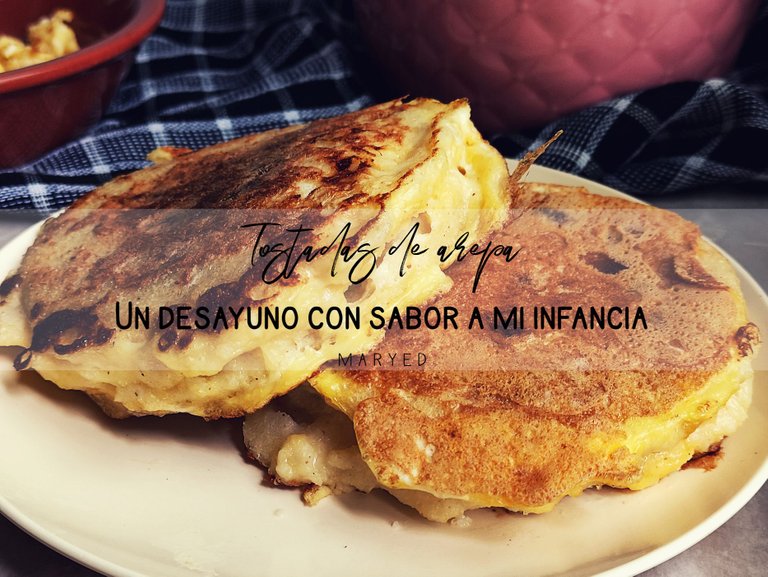
I think most of us have a particular food that evokes beautiful moments from the past, like from our childhood, for example. I always remember that, when I was a child, my grandmother used to invent too much in the kitchen and, in her own way, she would end up preparing unique and very special dishes that I never got to try elsewhere or at the hands of some other extraordinary cook.
My grandmother's famous tostadas de arepa was one of my favorite breakfasts as a child. I don't really know where she must have gotten that way of preparing arepas, but what I do know is that nowhere else have I gotten to eat them this way and even when I would tell someone about the delicious arepa tostadas that my grandmother prepared, people would stare at me with a confused look on their face and simply ask me: what are you talking about? I would end up explaining what that was all about, but it was still the first time they had heard of something similar. So, technically, I attribute this particular way of preparing arepas "viejas" to my grandmother until someone can tell me they've already tried this somewhere else.
I have long wanted to share this special recipe here on my Blog and, really, I don't know why it took me so long to do so. But the truth is that, besides being a great and delicious recipe, it is a recipe for making the most of it because I think that many of the Venezuelans who read me here will agree that eating an arepa that is not freshly made can be a not so pleasant experience, but with this idea that can be transformed.

INGREDIENTES Y PREPARACIÓN
INGREDIENTS AND PREPARATION
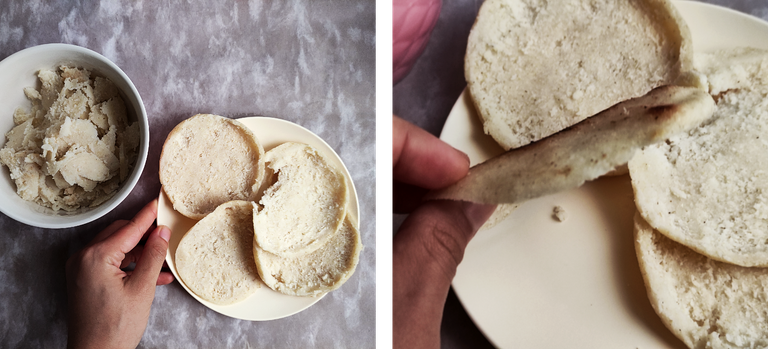
Para preparar este desayuno empleé dos arepas que habían sobrado de hace unos días (estas deben de ser lo suficientemente gruesas, es decir, tener bastante masa en su interior), dos huevos, leche de almendras (aunque es válido cualquier otro tipo de leche, bien sea completa o descremada) y el queso de tu preferencia, eso sí, que esté rallado (yo usé mozzarella porque era lo único que tenía).
Comenzaremos retirándole toda la masa interior a las arepas (por eso les digo que deben de ser lo suficientemente gruesas) hasta dejar sólo las tapitas.
To prepare this breakfast I used two arepas left over from a few days ago (they must be thick enough, that is, have enough dough inside), two eggs, almond milk (although any other type of milk is valid, either full fat or skim milk) and the cheese of your preference, of course, grated (I used mozzarella because it was the only thing I had).
Start by removing all the dough inside the arepas (that's why I tell you that they must be thick enough) until only the tops are left.
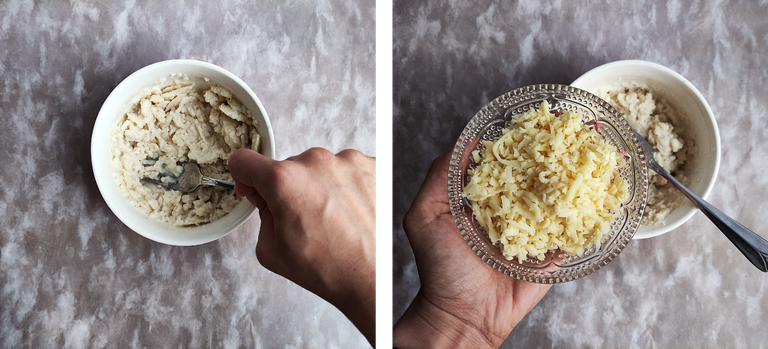
Ahora, se le añade una pequeña cantidad de leche hasta que la masa la absorba lo suficiente, a medida que la aplastas con ayuda de un tenedor. Te aconsejo que vayas añadiendo el líquido poco a poco hasta lograr la consistencia deseada. Luego, se añade el queso y se rectifica la sal en caso de que sea necesario. Se mezcla todo muy bien y si hace falta añadir un poco más de leche, ¡hazlo!
Now, add a small amount of milk until the dough absorbs it sufficiently, as you mash it with the help of a fork. I advise you to add the liquid little by little until you reach the desired consistency. Then add the cheese and adjust the salt if necessary. Mix everything very well and if you need to add a little more milk, do it!
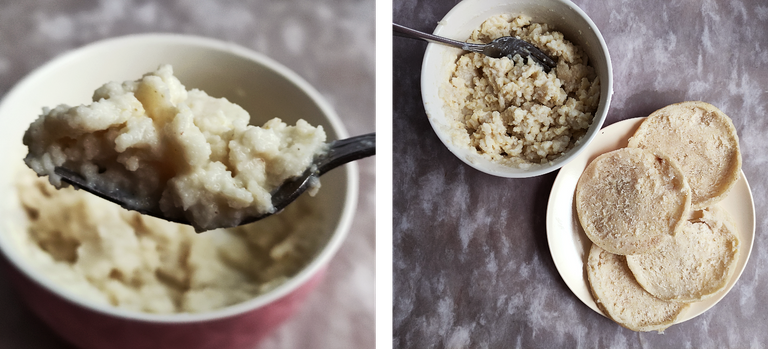
La consistencia debe ser como la que se observa en la imagen, es una mezcla algo pastosa. No demasiado seca, ni demasiado líquida. Es un punto medio, en realidad, en donde todo se encuentra lo suficientemente compactado. Este será el nuevo relleno de nuestras arepas. Y ahora, lo que resta por hacer, es rellanar las tapitas de las arepas que habíamos reservado hace un momento.
The consistency should be as shown in the picture, it is a somewhat pasty mixture. Not too dry, not too liquid. It is a middle point, in fact, where everything is sufficiently compacted. This will be the new filling for our arepas. And now, what remains to be done is to fill the arepas that we had reserved a moment ago.
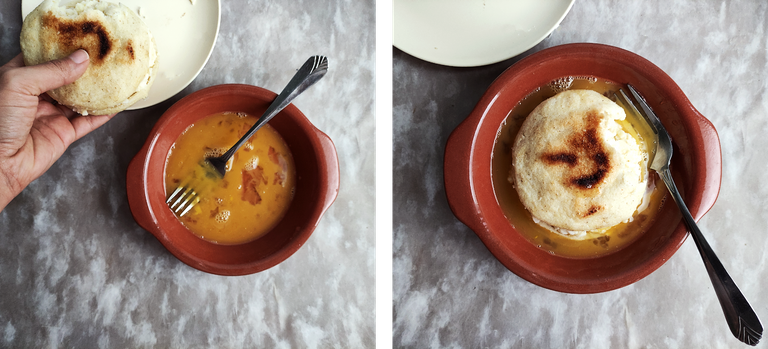
Y ahora, procederemos a sumergir las arepas ya rellenas en huevo batido. Puedas dejarlas un par de minutos remojándose por ambos lados. Ya luego de eso se procede a colocarlas en una sartén previamente untada con un poco de aceite para que el huevo se cocine y verá que, literalmente, lucen como una tostada.
And now, we will proceed to dip the arepas already filled in beaten egg. You can leave them for a couple of minutes soaking on both sides. After that, place them in a frying pan previously greased with a little oil so that the egg cooks and you will see that they literally look like toast.


RESULTADOS
RESULTS
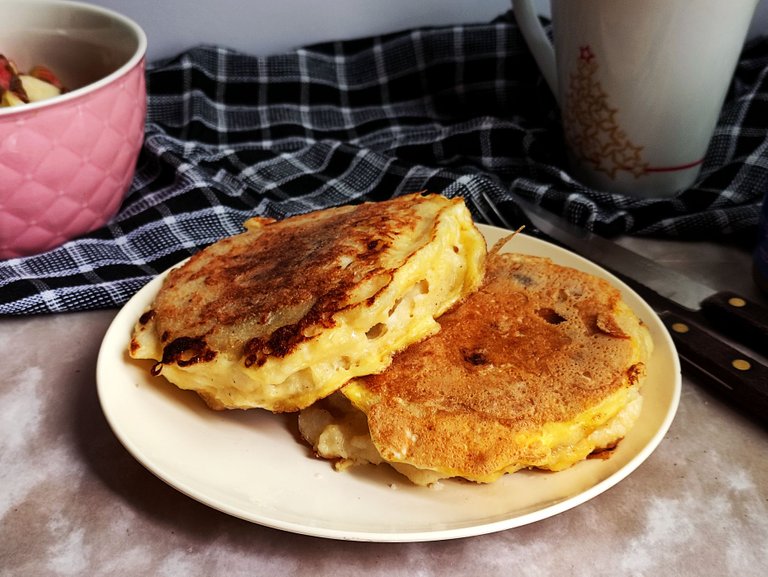
¡Cuéntenme!, ¿qué tal les ha parecido esta idea? ¿Alguna vez en su vida han preparado las arepas de esta forma o conocen de alguien que las prepare así?
Les cuento que yo tenía mucho tiempo sin comer estas tostadas de arepas. Ni siquiera recuerdo cuando fue la última vez que mi abuela me las preparó, peor lo cierto es que hace días desperté pensando en este desayuno y así fue como surgió en mí esas ganas frenéticas que querer prepararlo. Puede que no sean igual de divinas como las que preparaba mi abuela, pero haberlas probado me permitió viajar un poco al pasado y recordar momentos muy lindos de cuando yo era niña.
Tell me, how do you like this idea, have you ever prepared arepas this way in your life or do you know anyone who prepares them this way?
I tell you that I had a long time without eating these tostadas de arepas. I don't even remember the last time my grandmother prepared them for me, but the truth is that a few days ago I woke up thinking about this breakfast and that's how I got the frantic desire to prepare them. They may not be as divine as the ones my grandmother used to prepare, but having tasted them allowed me to travel back in time and remember beautiful moments when I was a child.
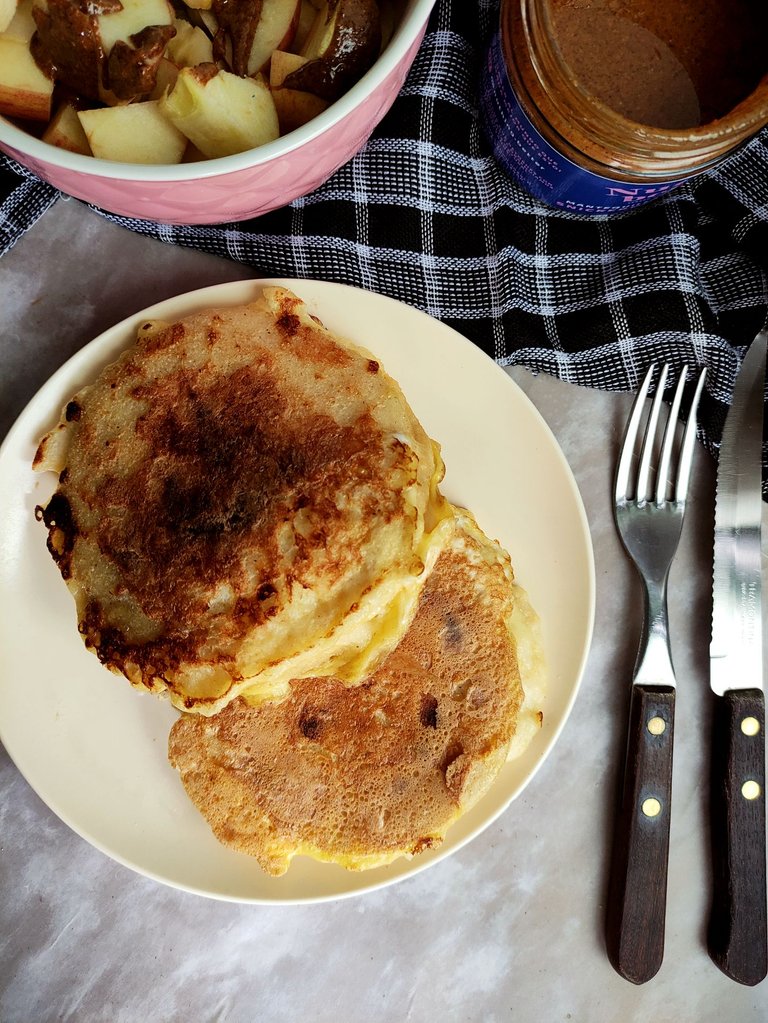
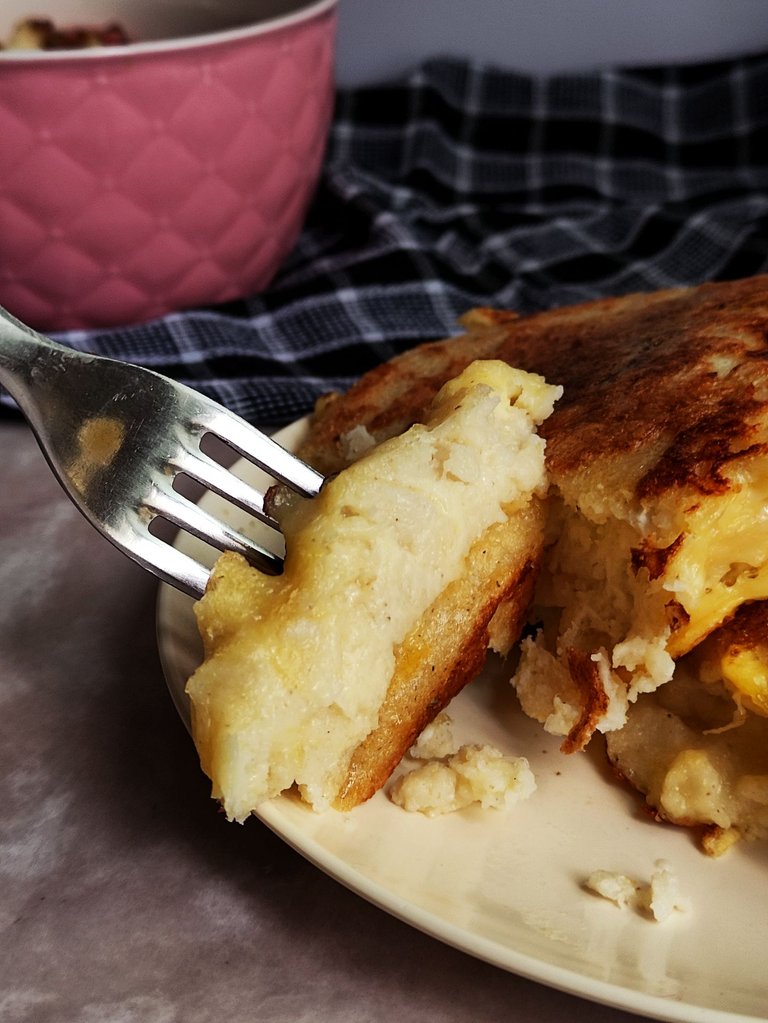

Gracias por leer esta publicación. ¡Hasta la próxima!
Thanks for reading this post. See you next time!

✎ Edición por | Edition by: @maryed, Pixlr Photo Editor & Canva.com
✂ Separador | Separator: Separadores de texto para Blog
Translated with www.DeepL.com/Translator (free version)

